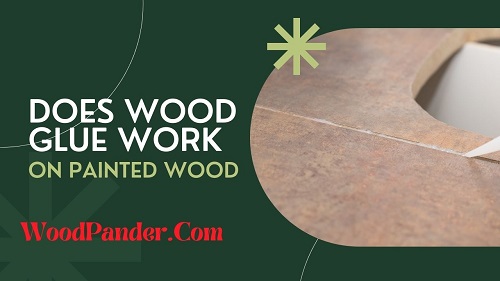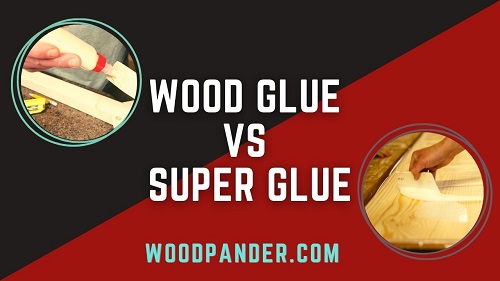If you’re new to woodworking, it becomes difficult to understand which glue to use and which one will be best for you, especially choosing between hide glue and wood glue.
What’s the difference between hide glue vs. Wood glue?
Wood glue is specifically made for all woodworking projects, whereas hide glue is mostly used in antique furniture and musical instrument makings. Wood glues are best for their strongest bond and easy availability, but hide glue can not be beaten when it comes to reversibility and clean finishes.
However, if you want to know which one is better for you between these two types of glue, you have to stay with us till the end of this article. We’ll show a head-to-head comparison between hide and wood glue so you get the right choice. Let’s start!
Table of Contents
- Hide Glue vs. Wood Glue: Comparison Table
- Can You Use Hide Glue Instead Of Wood Glue?
- Related Questions
- In Conclusion
Hide Glue vs. Wood Glue: Comparison Table
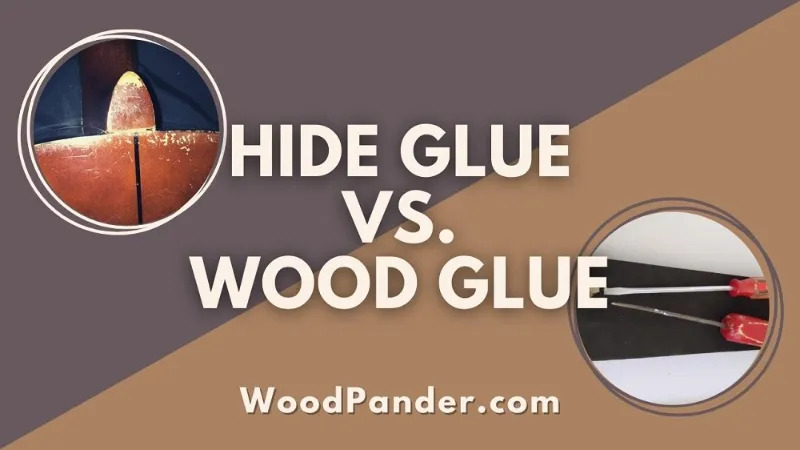
Take a close look at the quick comparison table to identify their differences.
| Features | Hide Glue | Wood Glue |
| Key Ingredients | Natural components (Animal Hides, hooves, fat) | Synthetic (PVA, Polyurethane, etc.) |
| Bond Strength | Decent bond strength | High bond strength |
| Water Resistance | No | Yes |
| Reversibility | Yes | No |
| Availability | Not widely available | Widely Available |
| Assembly Time | Short | Long |
| Finishing | Transparent and clean | Dark and leave stains |
| Cost | More price | Less price |
What Is Hide Glue?

Hide glue is mainly produced from the collagen of animal hides and bones. Previously hide glues were used for meat packaging or tanning, but at present, it’s sold by different adhesive companies.
Now, hide glues have extensive uses in woodworking, especially for musical instrument repairs. It’s ideal for restoring old furniture and creates a strong bond between woods. And you can melt it at a high temperature if you want to resemble the woodwork.
Pros
- Doesn’t leave stains after drying
- Best for creating strong bonds in old furniture
- It can be cleaned even after a long time of application
- Works better than wood glue for guitars or violin
- It can create rubbed joints
Cons
- Not waterproof or water resistance
- Unpleasant smell
What Is Wood Glue?
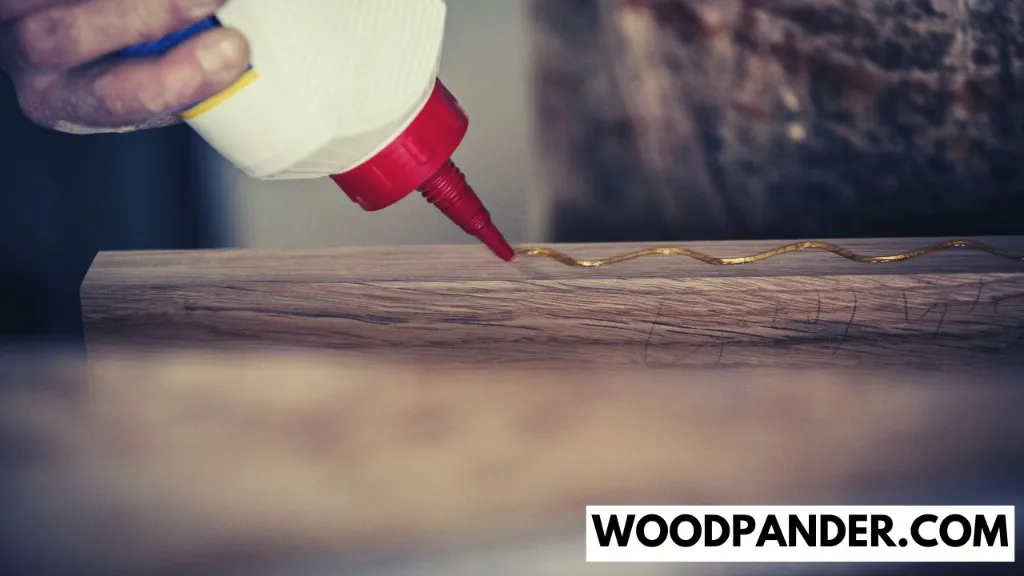
Wood glues are widely used commercial adhesives. They contain different chemical ingredients, such as polyvinyl acetate, epoxy, polyurethane, and more.
Wood glues are dedicatedly made for woodworking activities. Its adhesive components specifically work for woods. It creates strong bonds between different wood pieces and are durable for a lifetime.
Pros
- Water-resistant and waterproof
- It efficiently creates wood-to-wood bonds
- Available different types of wood glues for slow or fastest setting
- It’s suitable both for interior and exterior wood projects
- Provides the decent gap-filling ability
Cons
- Not suitable for the woodwork that needs to be reassembled later.
Detail Comparison Between Hide Glue Vs Wood Glue
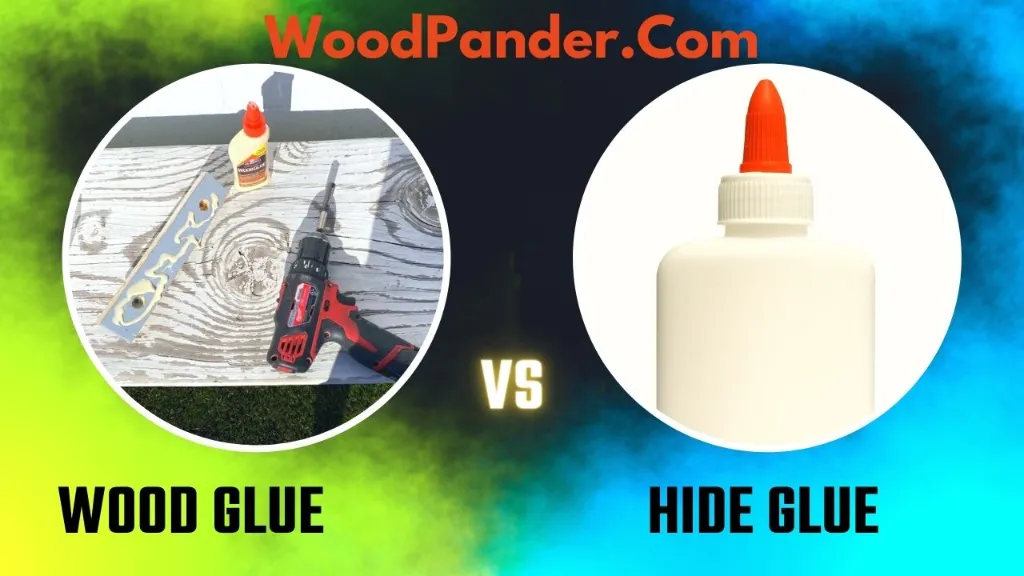
We know you need more than a quick overview when you want to learn every difference between hide glue and wood glue. Of course, knowing about them better will help you to pick the right one for your every different woodworking project.
1. Key Ingredients
Key ingredients of glue are a major consideration, as some glues can contain toxic chemicals.
- Hide Glue
The main ingredient of the hide glue is a protein colloid made from animal tissues. The boiling collagen of animal bones, fat, tendons, skins, and other tissues used to make the glue. Thus it produces an unpleasant smell while used. But you can rest assured there are no unhealthy effects of these components.
- Wood Glues
On the other hand, polyvinyl acetate (PVA) is the main ingredient for commercial wood glues. It is water-based but also contains other chemicals. Some of them also use polyurethane. As regular tools, these ingredients are not toxic or don’t produce toxic fumes. But some wood glues add some toxic chemicals for better adhesion. In that case, while buying the glues, check out whether it contains any harmful components.
Winner: The natural composites of hide glue make it safe.
2. Glue Bond Strength
If you’re choosing glue for a wood project, first, you need to consider which glue will create the strongest bond between the wood pieces.
- Hide Glue
Hide glues form a strong bond. But the bond strength can’t be equal to wood glue. So it’s best to use when the bond is not your top priority.
- Wood Glue
Comparatively, wood glues are specifically made for wood applications, providing a stronger wood-to-wood bond even for coarse wood. It creates a much stronger bond that if you try to seperate the glue joining parts, the wood will break before the glue bond.
Once you apply the wood glue to the wood, the wood fibers finely absorb the glue and dry after a clamp time. As a result, it makes a solid bond between the wood pieces that is hard to break.
Winner: Wood glue creates a stronger bond between wood pieces than hide glue.
3. Availability
If you want a glue that can be easily available anywhere and anytime so your woodwork won’t delay or you can easily buy them while suddenly running out of glue.
- Hide Glue
Hide glues are not available commercially like wood glues. You can purchase the hide glue from some online retailers. But they are not available in local stores.
If you want hot hide glues, you must make it yourself. Though, preparing hot hide glue is a challenging task. In that case, you should take help from some DIY tutorials or professionals.
- Wood Glue
Meanwhile, Wood glues are easily available at local hardware stores near you because of the high demand and affordable price. You can find them on many online retailers such as Titebond, Gorilla Glue, Elmer’s, etc.
These popular brands have a wide range of wood glues with different properties and specific woodwork. It has a higher demand among woodworkers, hobbyists, and DIYers.
Winner: Wood glue is widely available everywhere.
4. Assembly Time
The more assembly time your glue has, the more time you can use the glue. So it’s a must-consider while buying an adhesive.
- Hide Glue
Hide glue has a very short assembly time. So after opening the packages, you need to use the hide glue as soon as possible. Otherwise, it will get dry and unusable.
They are good for any woodwork that requires less time to work. But if you need enough time to assemble the wooden items, hide glues might not be the perfect choice.
Hide glue is workable when it’s hot, but when its temperature becomes lower and cool, it becomes adhesive and strongly holds the wood pieces together without clamps. However, it takes almost 24 hours to let the hide glue completely dry and reach its full strength.
- Wood Glue
Most of the wood glue provides a quality assembly time for the woodworkers. So that they get enough time to use the glue conveniently and set their wooden pieces in the right places. Thus, you can work on time and get time to bond between pieces perfectly.
Wood glue’s assembly time is suitable for woodwork with many details and pieces that must be put together carefully to bond. Wood glues also take about 24 hours to dry and get their full strength.
Winner: Wood glue because it provides a longer assembly time.
5. Water Resistance
Woods can get damp anytime. So if the adhesive you’re using is not waterproof, it can not be applied on wet wood, or even the glue won’t last long in a humid environment.
- Hide Glue
Hide glue is made from animal products, so it’s easily weakened in water and dissolves in hot water. Hide glue is not waterproof or water resistant. Though it’s not an important thing for antique and instrument makers.
But it would be a drawback if your wood projects have a chance to be exposed to water. Otherwise, hide glue is not suitable for exterior wood projects.
- Wood Glues
Wood glues are available in both waterproof and water resistant. So you can pick any one of them according to your requirements. It has excellent water-resistance ability.
Use wood glues if you’re working on a wood project and expecting moisture to creep into your work. Because they ensure your project will not ruin because of water. Wood glue has higher durability even if you use it on the exterior.
This glue can be cleaned up if exposed to water before it dries. But once it’s fully dry, it cannot dissolve even if you soak the wood piece in warm water for weeks.
Winner: Wood glues are the winner because they’re waterproof and water resistant.
6. Cost-Savings
Who doesn’t want to save some bucks? Woodworkers, too, always find some best but cost-effective glues as they need them regularly.
- Hide Glue
The bottled hide glues are available at less cost because they’re produced in bottles and larger quantities. However, the hot hide glues have more cost due to their manufacturing cost and due to the complex manufacturing process. So it’s not a cost-saving option for smaller works.
- Wood Glue
Due to the wide popularity and availability of wood glues, brands compete to provide customers with wood glues at a lower price. On top, wood glues also come with smaller packages for small works, which makes them much more affordable and cost-effective.
Winner: Wood glue because it’s come in handy and saves your cost.
7. Reversibility
Sometimes you need to reverse the glue if you join the wrong wood pieces. In a wood project, many times woodworkers need to reverse glue. So glue’s reversibility is important.
- Hide Glue
Reversibility is one of the most important reasons for woodworkers to use hide glues when they want to do the woodwork reversed. You may want to replace the wood pieces or remove them, and put them back together again.
Hide glue can be reversed with heat and moisture or water. It began to melt at more than 70° or 160° F. However, rubbing the glue joints with hot water is the easiest way to clean up the hide glue. But for the inside joint or where you can’t access rubbing, steaming the part will get your job done.
The instrument makers especially prefer hide glue over wood glue because it helps them clean or loosens the glue while making repairs or reassembling the musical instruments.
Hide glue can be removed even from wooden pieces which have been made many years ago and you can rejoin them again.
- Wood Glue
You know, wood glues are so strong that they cannot be reversed. This glue fills the gap between the wood and bonds the wood tightly. So, you can only separate the wood pieces by damaging the woodwork.
Winner: Hide glue as it can be reversed with heat and water.
8. Finishing
Wooden furniture requires a clear and nice visual appearance. So if the adhesive leaves stains on the wood pieces, it destroys the complete look of the furniture.
- Hide Glues
Hide glues are highly effective in providing a cleaner finish. It provides transparent color after drying, so there are fewer stains behind it. Also, they dyed without any issues.
On top, if the residue is left of the hide glue, you can easily dissolve or remove them. With this ability, hide glue helps you complete your woodwork with a hassle-free, neater, cleaner finish.
- Wood Glues
Meanwhile, wood glue needs a clean finish. It leaves a slightly darker appearance and you might need to scrub it off. Cleaning or removing wood glue residue is more involved than hiding glue. So once it dries, it’s impossible to clean it up.
Winner: Hide glue offers a crystal clear appearance.
Can You Use Hide Glue Instead Of Wood Glue?

Though hide glue provides good bonding between wood pieces, carpentering is not recommended if you want to make wooden furniture long-lasting and durable and if you have no intention of reassembling the work in the future.
However, when it’s about repairing some old wood furniture or making a new one that needs to be reassembled or tightened, then you can use hide glue instead of wood glue.
When Should You Choose Hide Glue For Your Woodworking Project?
In the below circumstances choosing hide glue will be best for you.
- If you need reversible glue to undo the joints on your woodwork
- If you prefer a transparent and clear finish on your wooden furniture
- When you don’t like to shrink the glue after drying, and doesn’t have any creeping effect
When Should You Choose Wood Glue For Your Woodworking Projects?
Wood glue is the perfect choice for any woodworking project because it can create a superior bond. So following criteria are best for using wood glue.
- When you want to create the strongest bond between wood joints
- If you’re looking for an inexpensive and widely available glue.
Related articles :
- Rustoleum Clear Coat vs Polyurethane.
- Aliphatic Glue Vs. PVA.
- Polyurethane vs Oil Finish.
Related Questions
Can hide glue fill the gaps?
Hide glues can’t fill the gaps because they don’t contain any PVA-based components or epoxy-like wood glues that can seal the gaps.
How long does hide glue last?
Hide glues usually have an average shelf life of 12 months. Only a few manufacturers produce hide glue that can last up to 18 months. Besides, wood glue lasts longer than hide glue, about 2 years or more.
What is the difference between hide glue and wood glue?
Hide glue is made from animal collagen, while wood glue is typically made from synthetic resins.
Which is better for woodworking, hide glue or wood glue?
It depends on the project, as both have their strengths and weaknesses.
Is hide glue stronger than wood glue?
No, hide glue and wood glue have similar strength.
How long does it take for hide glue and wood glue to dry?
Hide glue takes about 30 minutes to an hour to dry, while wood glue can take up to 24 hours.
Can you stain over hide glue and wood glue?
Yes, you can stain over both hide glue and wood glue.
Is hide glue more difficult to work with than wood glue?
Hide glue requires a bit more preparation and skill to work with than wood glue.
Are there any advantages to using hide glue over wood glue?
Hide glue has the advantage of being reversible and more environmentally friendly, while wood glue is more convenient and easier to use.
Are there any disadvantages to using hide glue over wood glue?
Hide glue can be less convenient to use and has a shorter shelf life than wood glue.
Can you use hide glue and wood glue interchangeably?
You can’t use hide glue and wood glue interchangeably, as they have different properties and characteristics.
How do you choose which glue to use for your woodworking project?
Consider the properties and requirements of the project, as well as personal preferences and skill level, to choose the appropriate glue.
In Conclusion
Hide glue and wood glue are both effective tools in their aspects. Only you have to apply the right one in the right place.
For hobbyists, DIYers, and Woodworkers, wood glue is the top choice. You can choose hide glue for making or repairing antique and musical instruments or wood glue for other woodwork.
However, ensure you’re purchasing the right type of wood glues because some wood glues come only for indoor purposes while some come with both indoor and outdoor uses.
Hopefully, now you have clarity between hide glue vs. Wood glue, and you know what glue would be the right pick for you.
So best of luck with your next woodworking projects!

